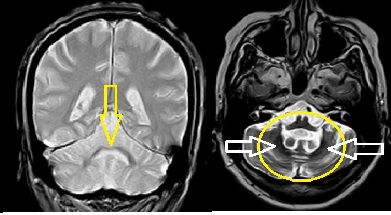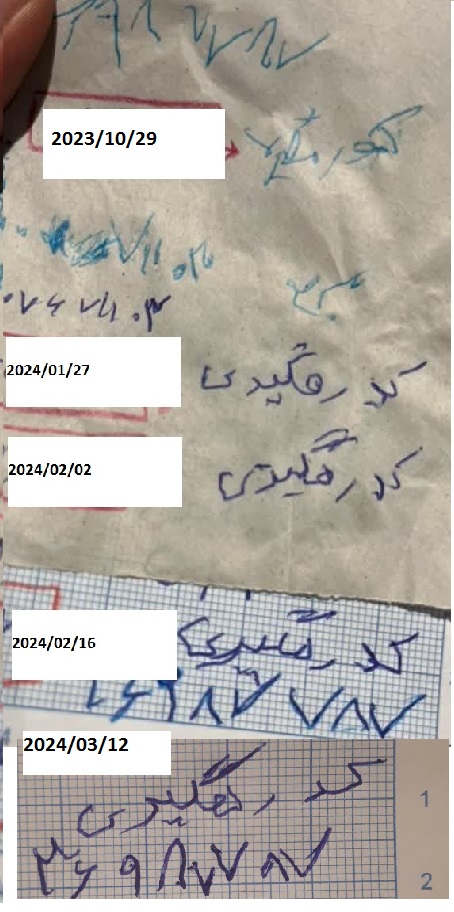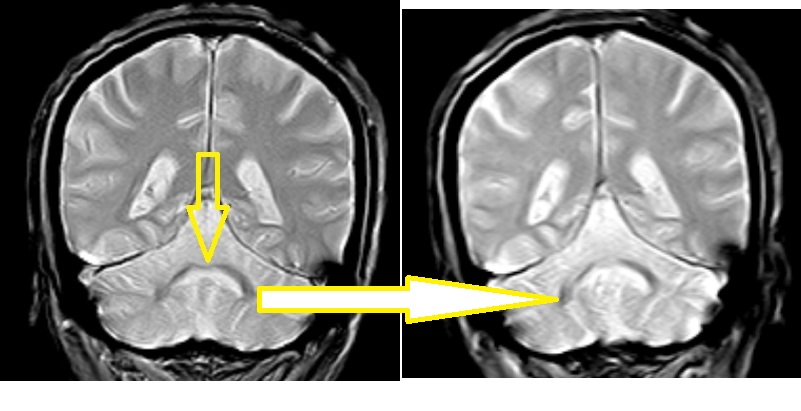Category: Parkinsonism, Atypical: MSA
Objective: Iron removal seems to be a treatment approach in Multiple system atrophy (MSA) because pathological findings shows the accumulation of iron and α-synuclein protein in white cells of the cerebellum and brain. Iron elimination can be done with iron removal from blood with iron chelators or cleaning from cells with iron chaperones [1, 2]. Our case trial is de-ironization with deferipron as an iron chelator which administered by nasal spray to penetrate brain via olfactory and trigeminal nerve pathway.
Background: The general routes of administration such as oral or intravenous routes have limitations in drug delivery to the brain because of blood–brain barrier (BBB) and the extensive first-pass metabolism effect. The alternative way is nasocephalic pathway as a route for effective drug delivery to the brain [3] via olfactory and trigeminal nerve lines [4]. This nasal-brain route is fast-short way and bypasses the BBB even high molecular weight (5000 Dalton or more) substances [5].
Method: We conducted this research on a 55 yr age women who involved in MSA from 30 months ago and all neurological medications and physical therapy failed in treatment. Brain MRI with gradient echo protocol showed black arc in the cerebellar peduncle [figure 1]. With the aim of iron elimination from the cerebellum, we administered nasal spray of deferiprone every 12 hours, 2 puff.
Results: Her handwriting and speech rehabilitated at 20th week of treatment [figure 2] and UMSARS decreased from 45 to 36. Swallowing scale return from 2 to 0. Her brain stem symptoms (orthostatic hypotension, bradycardia and micro aspiration), ocular motor, sleep, appetite and dressing problems cured during 2 weeks. Urinary and bowel function rehabilitated more than 50%. Blood iron increased from 54 to 89 mcg/dL and urine iron increased from 16 to 46 mcg/dL. Ferritin decreased from 38.26 to 18.3 ng/mL after 3 months treatment. TIBC increased from 305.7 to 312.8 mcg/dL. Follow-up MRI showed smaller and fainter arc of iron after 3 months.
Conclusion: This confirms that deironization via naso-cephalic way extracts irons of brain and export them to systemic and renal circulation. Our finding shows deferiprone was more potent than defroxamine, nasal spray was better than nasal dropplets and nasal was more effective than oral administration of deferiprone.
Black arc in MRI with gradient echo protocol
Recovery of handwriting (written کد رهگیری)
MRI 3 months after Nasocefalic De-ironization
References: 1- https://classic.clinicaltrials.gov/ct2/show/NCT05109091?term=ath434&draw=2
2- Y. H. Han, Topographical differences of brain iron deposition between progressive supranuclear palsy and parkinsonian variant multiple system atrophy. J. Neurol. Sci., 325 (2013), pp. 29-35
3- Seung-Hyun Jeong, Ji-Hun Jang, Yong-Bok. Drug delivery to the brain via the nasal route of administration: exploration of key targets and major consideration factors. J Pharm Investig. 2023; 53(1): 119–152.
4- Gänger S, Schindowski K. Tailoring formulations for intranasal nose-to-brain delivery: a review on architecture, physico-chemical characteristics and mucociliary clearance of the nasal olfactory mucosa. Pharmaceutics. 2018;10:116–143.
5- Ugwoke MI, Verbeke N, Kinget R. The biopharmaceutical aspects of nasal mucoadhesive drug delivery. J Pharm Pharmacol. 2001;53:3–22.
To cite this abstract in AMA style:
A. Amoushahi, A. Sahebkar, P. Moeini, N. Chitsaz. Brain De-Ironization with Nasal Spray of Iron Chelator in Treatment of Multiple System Atrophy, a Case Trial [abstract]. Mov Disord. 2024; 39 (suppl 1). https://www.mdsabstracts.org/abstract/brain-de-ironization-with-nasal-spray-of-iron-chelator-in-treatment-of-multiple-system-atrophy-a-case-trial/. Accessed April 19, 2025.« Back to 2024 International Congress
MDS Abstracts - https://www.mdsabstracts.org/abstract/brain-de-ironization-with-nasal-spray-of-iron-chelator-in-treatment-of-multiple-system-atrophy-a-case-trial/



